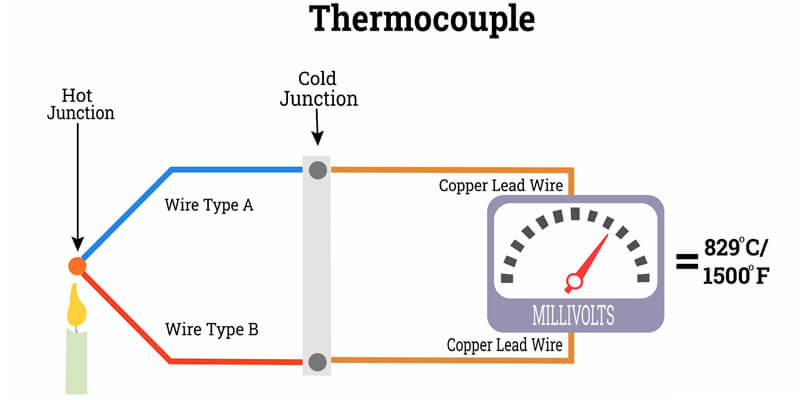
When two dissimilar metal or alloy conductors are connected together to form a closed circuit and the two junctions are kept at different temperatures, thermal electromotive force (EMF) is generated at the temperature gradient zone along the conductor’s length in the circuit. Thus, when one end (cold or reference junction) is kept constant at a certain temperature, normally 0℃, and the other end (measuring junction) is exposed to unknown temperature, the temperature at the latter end can be determined by measuring EMF so generated. Such a combination of two dissimilar metal conductors is called “Thermocouple.” As described, thermocouple is a “temperature difference sensor” to generate millivolt signal (EMF) only at the temperature gradient segment, which inevitably makes the thermocouple conductor heat treated in accordance with the temperature profile along with the insertion depth. It is not correct, therefore, to use such a thermocouple as once heat treated and so stabilized, for measurement of the other location that has different temperature gradient. Particularly, when the measurement is made in shorter insertion depth than previous measurement, it will result in a large reading error, since already heat treated segment is exposed to non-temperature gradient zone thus exhibiting spurious EMF, therefore, avoid re-using one thermocouple for measurements at the different locations. Generally, service life of the thermocouple can not be predicted nor be guaranteed, as the environments of temperature measurement are so various involving handling, installation, corrosion, vibration, thermal cycles, and steep change in temperatures.
Features of Thermocouple
Industrial thermocouple, in comparison with other thermometers, has the following features: 1. Quick response and stable temperature measurement by direct contact with the measuring object.
- If the selection of a quality thermocouple is properly made, wide range of temperature from −270 to 2,300℃ can be measured.
- Temperature of specific spot or small space can be measured.
- Since temperature is detected by means of EMF generated, measurement, adjustment, amplification, control, conversion and other data processing are easy.
- Less expensive and better interchangeability in comparison with other temperature sensors.
- The most versatile and safe for measuring environments, if a suitable protection tube is employed.
- Rugged construction and easy installation.












